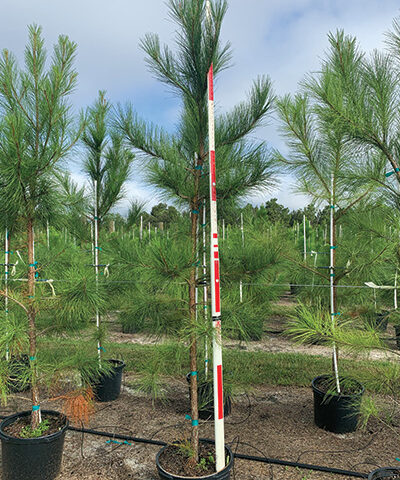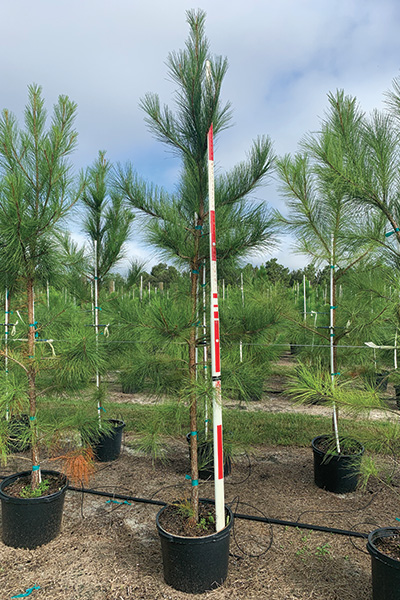Pine Loblolly

Pinus taeda
The Loblolly Pine tree is native to North America and can be found in several
states spanning the southeastern United States. Loblolly Pines are the secondmost
common species of tree in the United States, following the Red Maple and
making up over 50% of standing pines in the southeast. Since this species of pine
is known to be found in lowlands and swampy areas, it’s no wonder where it got
its name. The name Loblolly comes from a combination of the word “lob” referring
to a thick, heavy bubbling of cooking porridge, and “lolly”, a broth or soup boiled
in a pot.
Loblolly Pines have a rich history. The famous Eisenhower Tree, named after the
US President, was a Loblolly Pine, as well as the Morris Pine in Arkansas which is
over 300 years old. Loblolly seeds were brought to outer space on the Apollo 14
flight. On the spaceship’s return, the seeds were planted in several locations in the
US, including the White House. These moon trees are still alive today.
Today, the Loblolly Pine is planted to help stabilize environments with damaged
soils. White-tailed deer, bald eagles, gray squirrels, fox squirrels, quail, and wild
turkey all find refuge and food within the canopy of these trees. Many songbirds
feed on the seeds and help propagate the trees through seed dispersal. They are
typically planted in full sun and away from structures in groups of 2 or 4, and in
some cases, even planted as screens.

Ornamental Characteristics:
Native Origin:
North America, East Coast
Common Names:
Yellow Pine, Oldfield Pine, Bull Pine, Rosemary Pine
Description:
Hardy Range: 6 – 9
Mature Height: 60 – 90’
Mature Spread: 25 – 35’
Growth Rate: fast, with height increases of 24” per year.
Form: oval
Persistence: evergreen
Ornamental Characteristics:
The Loblolly Pine has evergreen, fragrant needles
that can grow up to 12 inches in length. They grow in bundles of three and are usually twisted with a bluish-green tinge. Loblolly Pines produce a large amount of cones every year, which attract squirrels and other mammals. It tends to be a messy tree due to its falling branches and pine cones. The Loblolly Pine grows upright and is not known for drooping. Its bark
is extremely thick, making it resistant to fire in the wild, like most other pines.
Environment:
Soil: acidic, loamy, moist, sandy, well-drained, and clay soils. While it prefers normal moisture, the tree can tolerate some flooding and moderate drought.
Salt: moderate
Exposure: full sun



